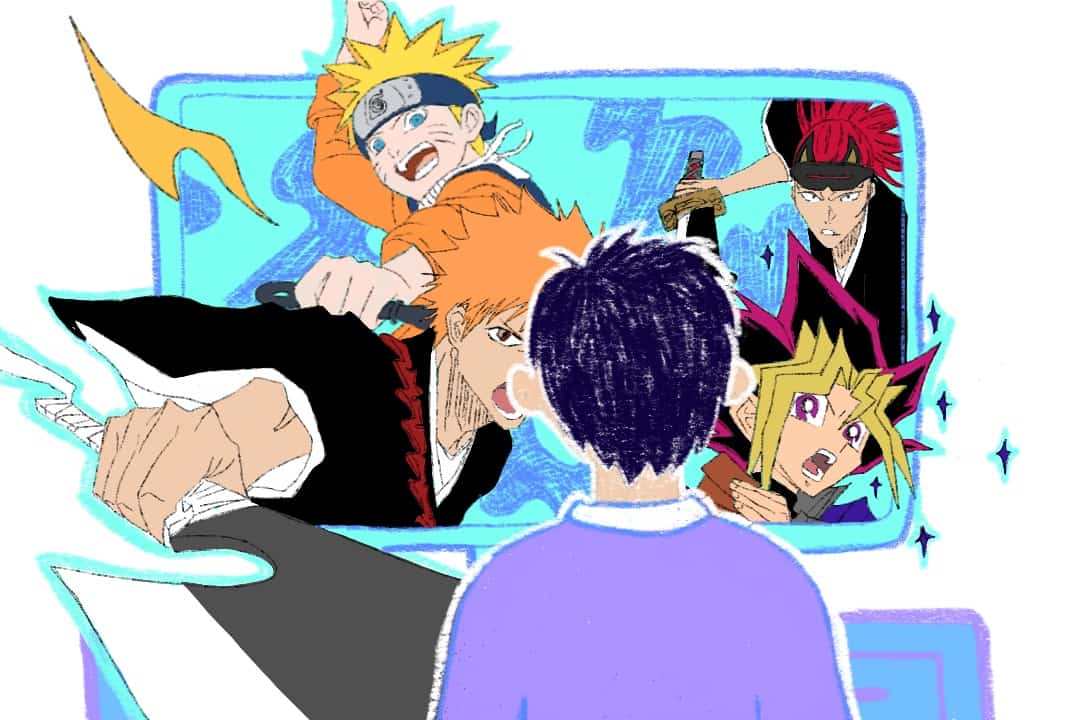If you got into anime well before this mid-2010s surge like I did, you’ll know that being an anime fan has a stigma surrounding it. Even with Marvel shoving nerdy comic book culture into the cultural limelight, people still give you weird looks when you admit to watching the Japanese equivalent.
I was certainly ostracized and scorned in high school for liking those weird Japanese cartoons. Outside of my circle of geeky, largely Asian friends, I didn’t have that many people to discuss anime with.
Growing up Chinese-Canadian in a predominantly white area immediately reinforced the sense of otherness that came with being an anime fan. The only programs on TV I could stand watching were cartoons like Justice League and Avatar: The Last Airbender, even as a brooding teenager. I couldn’t relate to any of the white faces I saw in popular media.
I recall clinging to anime so tightly while growing up because of the characters who closely resembled me. Sure, Chinese-Japanese ethnic tensions have existed for decades, but seeing Japanese characters on screen was better than nothing. It was a relief that someone in the world was telling stories that catered to me.
Furthermore, anime provided a form of escapism from my dreary everyday teenage life that I desperately craved. That’s perhaps why so many of the gateway anime titles — see the “Big Three” — fall into the fantasy and adventure genres. I myself grew up on shows like Yu-Gi-Oh, Naruto, and Bleach.
I used to be a rarity. Now, it’s never been easier to become an anime fan — especially outside of Japan.
The fandom has never been larger or more vibrant: anime-related memes get shared regularly, and the term ‘weeb’ gets thrown at those who have merely seen anime. The 2016 surprise hit Your Name paved the way for anime films to be screened in theaters worldwide. Attack on Titan has been regularly trending on Twitter as its final season airs.
This anime boom hasn’t gone unnoticed by corporations either, and anime has never been closer to being mainstream.
Sony acquired anime streaming giant Funimation back in 2017 and even bought out its main competitor, Crunchyroll, late last year for a whopping $1.49 billion. Netflix reported a 50 per cent viewership increase in anime titles on its platform in the last year, and has even funded and produced some of the most acclaimed titles of recent times, like Violet Evergarden and Devilman Crybaby.
Major anime YouTubers like Gigguk and akidearest now boast several million subscribers. The entire anime industry was estimated to be worth over 24 billion USD as of 2019.
Perhaps one reason for anime’s recent rise to prominence is its greatest asset: storytelling versatility. In my recent viewings, I’ve taken it upon myself to consume titles from all genres.
Some highlights include Monster, a psychological thriller about a kind doctor seeking redemption by trying to destroy the serial killer he unknowingly saved as a child, and A Silent Voice, a teenage drama about a boy who learns sign language to atone for his past bullying of a deaf girl while also learning to overcome social anxiety. Mushi-shi explores the acts of a wandering medium, Ginko, as he mediates between humans and mysterious spirits called ‘mushi’ in pre-Industrial Japan; compare this to the fast-paced tale of one high schooler’s quest to become a volleyball star in Haikyuu!!.
There are also timeless classics like the 1990s space western Cowboy Bebop or anything produced by the animation powerhouse that is Studio Ghibli. All these are but a small glimpse into some of the best that this vast, wonderfully diverse medium has to offer. There really is something for everyone.
All this has contributed to my second phase as an anime fan being a much more enjoyable experience than the first one. I took a near five-year hiatus from the anime world and am relieved to be back. I have a countless supply of friends to eagerly discuss the latest episodes with. I’m constantly recommending more obscure and classic titles to fans sick of mainstream shows.
Yet, there are still old traits I revel in — in what other medium can you see colourless manga panels adapted into colourful animated features, or have entire genres dedicated to giant fighting robots and flashy magical girls?
The landscape of anime has drastically changed. With more shows airing than ever to cater to an ever-expanding, ever-demanding consumer base, it has changed for the better.
But don’t ask me about it — I’ll be busy watching anime.


